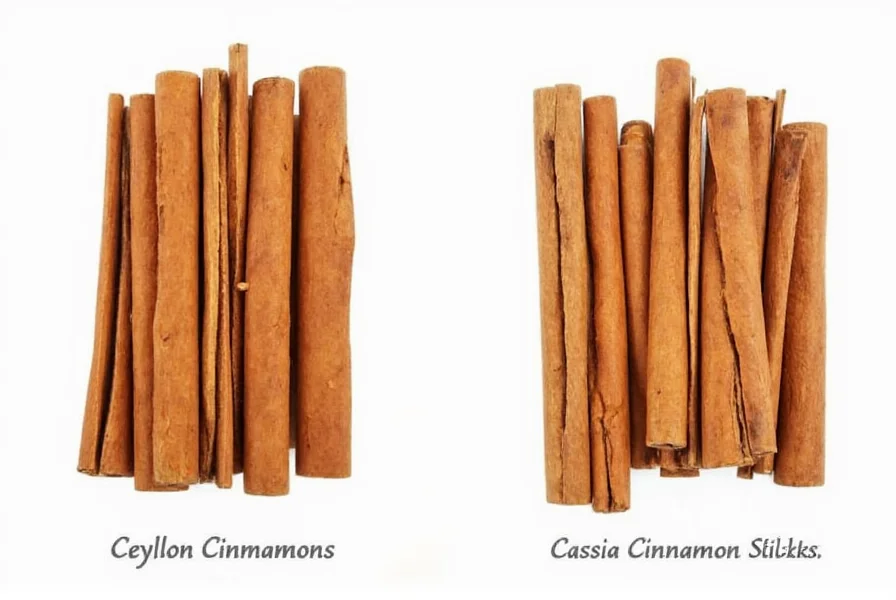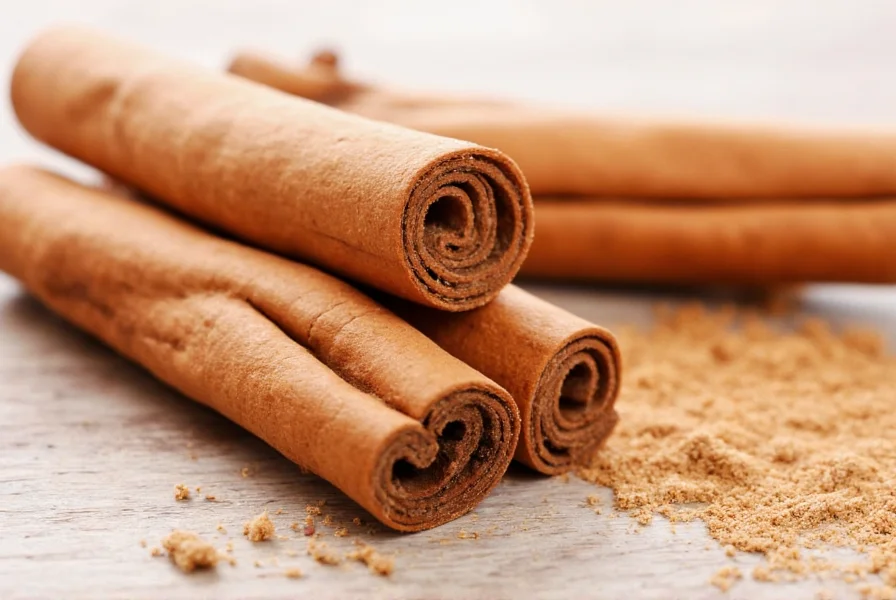For individuals managing type 2 diabetes, the potential role of cinnamon has generated considerable interest in both scientific circles and among patients seeking complementary approaches. Research indicates that certain compounds in cinnamon, particularly cinnamaldehyde and polyphenols, may improve insulin sensitivity and slow carbohydrate breakdown, potentially helping with blood glucose management.
What Does the Scientific Evidence Show?
A comprehensive review of 16 clinical trials involving over 1,300 participants with type 2 diabetes or prediabetes found that cinnamon supplementation (typically 1-6 grams daily for 4-18 weeks) resulted in modest but statistically significant reductions in fasting blood glucose levels. The average reduction was approximately 24.59 mg/dL compared to control groups. However, the effects on HbA1c (long-term blood sugar marker) were less consistent across studies.
It's crucial to understand that these effects are considered modest compared to standard diabetes medications. For context, metformin typically reduces HbA1c by 1-2% points, while cinnamon's effect on HbA1c in studies has been minimal or inconsistent.
| Study Parameter | Typical Findings | Limitations |
|---|---|---|
| Dosage Range | 1-6 grams daily (½ to 2 teaspoons) | Optimal dose not established |
| Duration | 4-18 weeks | Long-term effects unknown |
| Fasting Glucose Reduction | 10-29 mg/dL average | High variability between studies |
| HbA1c Impact | Minimal to no significant change | Less consistent than glucose effects |
Ceylon vs. Cassia: Understanding Cinnamon Types
Not all cinnamon is created equal when considering diabetes management. Two primary types exist:
- Ceylon cinnamon ("true" cinnamon): Contains significantly lower levels of coumarin, a compound that can cause liver damage in sensitive individuals or at high doses. This is the preferred type for regular consumption.
- Cassia cinnamon (common in supermarkets): Contains higher coumarin levels. The European Food Safety Authority recommends limiting intake to no more than 0.1 mg of coumarin per kg of body weight daily.
For a 150-pound person, this translates to approximately:
- Up to 1 teaspoon of Ceylon cinnamon daily
- No more than ½ teaspoon of Cassia cinnamon daily

Practical Considerations for Diabetes Management
If you're considering adding cinnamon to your diabetes management plan, these evidence-based recommendations can help you proceed safely:
- Consult your healthcare provider first - Especially important if you take medications that affect blood sugar or have liver conditions
- Choose Ceylon cinnamon when possible for regular use due to lower coumarin content
- Start with small amounts - Begin with ¼ to ½ teaspoon daily to assess tolerance
- Monitor your blood sugar - Track readings before and after adding cinnamon to assess individual response
- Maintain realistic expectations - Cinnamon should complement, not replace, standard diabetes care
Important Safety Considerations
While cinnamon shows promise as a complementary approach, several important safety considerations must be addressed:
- Not a replacement for diabetes medication - Cinnamon should never be used to discontinue or reduce prescribed diabetes medications without medical supervision
- Potential medication interactions - Cinnamon may enhance the effects of blood sugar-lowering medications, potentially increasing hypoglycemia risk
- Liver health monitoring - Those with liver conditions should exercise particular caution with Cassia cinnamon
- Pregnancy considerations - High doses may not be safe during pregnancy; consult your obstetrician
Current Medical Position
The American Diabetes Association's Standards of Medical Care in Diabetes does not currently include cinnamon in its recommended treatments for diabetes management. The Endocrine Society similarly states that while some natural products show promise, "the evidence for most is insufficient to recommend their routine use."
Major diabetes organizations emphasize that lifestyle modifications (healthy eating, regular exercise, weight management) and prescribed medications remain the cornerstone of effective diabetes management. Any complementary approaches, including cinnamon, should be viewed as potential additions to—not replacements for—these evidence-based strategies.
Conclusion
The relationship between cinnamon and diabetes management represents an area of ongoing research with promising but inconclusive results. While some studies demonstrate modest benefits for blood sugar control, the evidence isn't strong enough to recommend cinnamon as a standard treatment. For those interested in trying cinnamon, Ceylon variety in moderate amounts (½-1 teaspoon daily) appears safe for most people when used alongside conventional diabetes care and with medical guidance. As with any complementary approach, individual responses vary, and regular monitoring with your healthcare team remains essential for safe and effective diabetes management.

Can cinnamon lower blood sugar immediately after eating?
Cinnamon does not lower blood sugar immediately like diabetes medications. Any potential effects develop gradually with consistent daily use over weeks. It may help moderate post-meal blood sugar spikes when consumed with carbohydrate-containing meals, but shouldn't be relied upon for immediate blood sugar correction.
How much cinnamon should I take daily for diabetes management?
Research studies typically use 1-6 grams (approximately ¼ to 2 teaspoons) daily. For safety, limit Cassia cinnamon to no more than ½ teaspoon daily due to coumarin content. Ceylon cinnamon allows for slightly higher amounts (up to 1 teaspoon). Always consult your healthcare provider before starting any new supplement regimen.
Can I stop my diabetes medication if I take cinnamon?
No, you should never stop prescribed diabetes medication to use cinnamon. Cinnamon may provide modest complementary benefits but doesn't replace the effectiveness of standard diabetes medications. Abruptly stopping medication could lead to dangerously high blood sugar levels. Always discuss any changes to your treatment plan with your healthcare provider.
Does cinnamon work for both type 1 and type 2 diabetes?
Most research has focused on type 2 diabetes, where insulin resistance is a primary concern. There's limited evidence regarding cinnamon's effects on type 1 diabetes, which involves insulin deficiency rather than resistance. People with type 1 diabetes should be particularly cautious, as cinnamon could potentially increase hypoglycemia risk when combined with insulin.
How long does it take to see results from cinnamon for blood sugar control?
Studies showing benefits typically involved 4-12 weeks of consistent daily use. Individual responses vary significantly—some people may notice modest improvements in blood sugar readings within a few weeks, while others may see no effect. Regular blood glucose monitoring is essential to determine if cinnamon provides any personal benefit.











 浙公网安备
33010002000092号
浙公网安备
33010002000092号 浙B2-20120091-4
浙B2-20120091-4